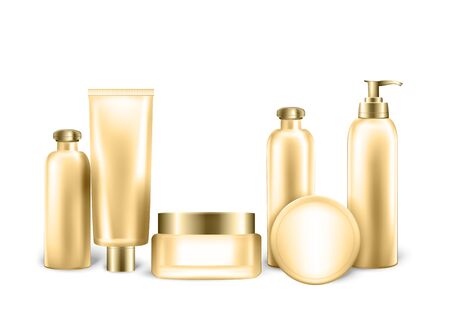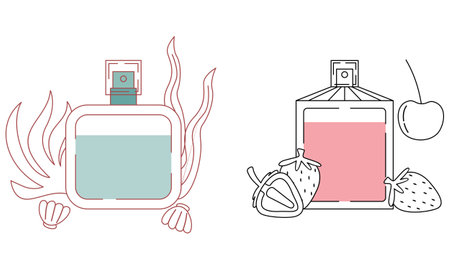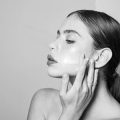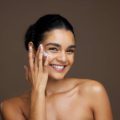Introduction: Clean Beauty in the American Mindset
In recent years, the clean beauty movement has captured the attention—and wallets—of American consumers. From Instagram influencers to eco-conscious shoppers at your local Target, there’s a growing demand for products that promise safety, transparency, and a commitment to health. But with this rise comes a flurry of questions: What does “clean” actually mean? Who decides if an ingredient is safe? And most importantly, what role does the FDA play in regulating these products? As labels like “non-toxic,” “all-natural,” and “free from” dominate store shelves, Americans are increasingly invested in understanding what’s inside their skincare and cosmetics. This surge in consumer curiosity puts the spotlight squarely on FDA oversight, sparking debate and confusion about what’s truly regulated—and what isn’t—when it comes to clean beauty ingredients.
2. The FDA’s Role: What’s Actually Regulated?
When it comes to clean beauty, there’s a lot of confusion about what the U.S. Food and Drug Administration (FDA) really oversees. Contrary to popular belief, the FDA doesn’t pre-approve cosmetic products or most ingredients before they hit store shelves. Instead, its regulatory power is focused on a few key areas that directly impact what ends up in your bathroom cabinet.
Labeling Requirements
The FDA mandates that all cosmetics sold in the U.S. must be labeled truthfully and not be misleading. This means ingredient lists, net contents, manufacturer information, and warnings (where necessary) must be clearly displayed. However, “clean,” “natural,” and “organic” claims aren’t strictly defined or regulated by the FDA—these buzzwords are often marketing-driven.
Safety Standards
Unlike drugs, cosmetics do not require FDA approval before being marketed, except for color additives. Brands are responsible for ensuring the safety of their products but don’t have to prove it to the FDA unless there’s a complaint or safety concern. The FDA can step in if a product is misbranded or adulterated (contains harmful substances), but routine safety assessments aren’t part of their process.
Banned and Restricted Substances
The list of ingredients actually banned or restricted by the FDA is surprisingly short compared to regulations in Europe and other regions. Here’s a quick comparison:
| Category | U.S. (FDA) | European Union |
|---|---|---|
| Banned Ingredients | 11 | ~1,600+ |
| Color Additives (Pre-approval Required) | Yes | Yes |
| Fragrance Disclosure Required? | No | Yes |
What Does This Mean for Clean Beauty?
If you’re shopping for clean beauty products in the U.S., it’s important to know that while the FDA sets baseline rules around labeling and outright hazardous substances, it doesn’t define or enforce what “clean” truly means. Most oversight is reactive rather than proactive—brands have significant leeway until something goes wrong. So, staying informed and reading labels remains your best defense in navigating the clean beauty aisle.

3. What Slips Through the Cracks: The FDA’s Limitations
While it’s easy to assume that every lotion, serum, and lipstick on U.S. shelves has been meticulously vetted by the Food and Drug Administration (FDA), the reality is far more complicated—and surprising. In fact, there are significant gaps in what the FDA actually oversees when it comes to clean beauty ingredients.
Pre-Market Approval: Not Required for Most Cosmetics
One of the most eye-opening facts is that, unlike drugs or medical devices, cosmetic products and their ingredients (with the exception of color additives) do not require pre-market approval from the FDA. This means brands can launch new formulations without any mandatory safety testing or regulatory review beforehand. So, unless a product makes medical claims (like treating acne or reducing wrinkles), it’s largely up to companies to ensure their own products are safe.
The “Fragrance” Loophole: Hidden Ingredients
Fragrances are a notorious blind spot in U.S. cosmetic regulation. Brands aren’t required to disclose individual fragrance components on labels; instead, they can simply list “fragrance” as a single ingredient—even though a typical fragrance blend may contain dozens or even hundreds of chemicals. This lack of transparency makes it tough for consumers seeking truly clean or allergen-free beauty options to make informed choices.
Enforcement Challenges: Limited Recalls and Oversight
Another key limitation: the FDA doesn’t have robust enforcement power over cosmetics. Unlike with food and drugs, the agency can’t require recalls for most beauty products—even if safety issues arise. The FDA typically relies on voluntary actions by manufacturers and post-market monitoring (such as consumer complaints) to identify problems. As a result, harmful products can remain on store shelves longer than most shoppers would expect.
Why These Gaps Matter for Clean Beauty Shoppers
For anyone passionate about clean beauty, these regulatory cracks matter big time. Without strong oversight and full disclosure, it’s challenging to know exactly what’s in your favorite moisturizer or foundation—or how safe those ingredients really are. That’s why savvy consumers increasingly look beyond marketing buzzwords, dig into third-party certifications, and support brands committed to radical transparency.
4. The Clean Beauty ‘Gray Zone’: Marketing vs. Reality
When it comes to clean beauty, what you see on the label isn’t always what you get—and that’s largely because the FDA doesn’t actually define or regulate the term “clean.” As a result, brands have plenty of freedom to market their products with buzzwords like “non-toxic,” “natural,” or “eco-friendly,” even when those claims aren’t backed by strict legal standards. Let’s break down what’s really going on behind the glossy packaging and how much of clean beauty marketing is about perception versus regulation.
What Brands Can Legally Claim
| Claim Type | FDA Regulation? | What It Means in Practice |
|---|---|---|
| “Clean” | No | No official definition; up to brand interpretation |
| “Natural” | No | Not regulated; could mean anything from a single plant extract to mostly synthetic ingredients with one natural component |
| “Organic” | Partially (by USDA, not FDA) | Must meet USDA organic standards if certified, but many use the word loosely without certification |
| “Hypoallergenic” | No | No standard testing required—any brand can use this term regardless of potential allergens present |
| “Fragrance-Free” / “Unscented” | Yes (labeling accuracy only) | If a product claims to be fragrance-free but contains masking scents, it must be disclosed on the ingredient list per FDA guidelines |
The Power of Perception: What Drives Consumer Choice?
With minimal legal requirements, brands have leaned into storytelling and emotional appeal to position themselves as “clean.” Think green packaging, minimalist designs, and language about safety and purity—all elements that tap into consumer desires for wellness and transparency. Yet, without standardized definitions from the FDA, these terms are more about marketing than science.
The Bottom Line for Consumers
- Read beyond the front label: The real information is in the ingredient list, not just bold claims.
- Look for third-party certifications: Seals from organizations like EWG or USDA Organic offer more credibility than generic clean beauty buzzwords.
- Know your priorities: Decide which ingredients matter most to you based on your own values and sensitivities rather than just marketing trends.
This gray zone between marketing and reality is why it’s crucial to stay informed—and skeptical—when navigating the ever-expanding world of clean beauty. Understanding what’s legally required versus what’s just hype can help you make choices that truly align with your standards.
5. Consumer Trends & What to Look for on Labels
Clean beauty is more than just a marketing buzzword—its a movement powered by informed consumers who want transparency and safety in the products they use every day. But with so many claims like “natural,” “eco-friendly,” or “non-toxic” crowding the shelves, how do you tell which products genuinely align with your values and which are simply greenwashing?
Decoding Ingredient Lists: What Matters Most
The FDA requires that cosmetic ingredients be listed in descending order of concentration, but it doesnt require pre-market safety approval or restrict certain controversial chemicals used in the U.S. When reading ingredient lists, pay close attention to the first five ingredients—they make up the bulk of the formula. Watch out for vague terms like “fragrance” or “parfum,” which can legally mask dozens of undisclosed chemicals.
Certifications: Your Trustworthy Shortcuts
Look for third-party certifications that indicate higher standards than what the FDA mandates. For example, USDA Organic means at least 95% of ingredients are certified organic, while Leaping Bunny ensures cruelty-free status. Other seals, like ECOCERT or EWG Verified, signal additional scrutiny over ingredient sourcing and safety. Remember, though, that not all reputable brands seek certification due to cost or philosophy—so use these labels as guides, not absolutes.
Red Flags vs. Greenwashing: Spotting the Difference
Be wary of bold claims without evidence. “Chemical-free” is misleading (everything is made of chemicals), and “dermatologist-tested” doesnt mean its safer or cleaner. Instead, look for specific ingredient callouts (like “no parabens” or “no phthalates”) and transparent sourcing information. If a brand provides full disclosure about their formulations and testing, thats a green flag worth trusting.
The takeaway? While the FDA sets some basic rules for cosmetics labeling, most of the responsibility still falls on you as a consumer to decipher whats really clean versus clever marketing. Equip yourself with knowledge—and let credible certifications and transparent brands lead your beauty routine.
6. What’s Next? Evolving Regulations and Industry Initiatives
The clean beauty conversation is far from over, especially as American consumers become increasingly ingredient-savvy and vocal about what goes on—and in—their bodies. So, what’s next for clean beauty regulation in the U.S.? Let’s take a look at upcoming legislation, the industry’s own initiatives, and how consumer demand is pushing both government and brands toward greater transparency.
Pending Legislation: A New Era for Beauty Regulation?
While the FDA’s authority over cosmetics has traditionally been limited, momentum is building on Capitol Hill. Recent years have seen bipartisan efforts to modernize cosmetic safety laws—most notably through the Modernization of Cosmetics Regulation Act (MoCRA) passed in 2022, which expands FDA oversight. However, many advocates argue that more comprehensive measures are needed, such as mandatory pre-market ingredient reviews and stronger recall powers. With mounting pressure from health-conscious consumers, further legislative changes seem likely in the near future.
Industry Self-Regulation: Filling the Gaps
In the absence of stringent federal mandates, many beauty brands and industry groups aren’t waiting for Washington to catch up. Organizations like the Environmental Working Group (EWG) and initiatives such as “Clean at Sephora” have set their own ingredient standards—often going above and beyond what the FDA requires. Brands embracing self-regulation are leveraging third-party certifications, transparent labeling, and even voluntary recalls to build consumer trust and differentiate themselves in a crowded marketplace.
The Consumer Effect: Demanding Cleaner, Safer Beauty
Consumers are now driving real change by demanding cleaner labels, full disclosure of ingredients, and meaningful action around sustainability and safety. Social media movements, influencer campaigns, and viral stories about ingredient safety have made it nearly impossible for brands to ignore these calls for accountability. This groundswell of consumer advocacy is already reshaping the regulatory landscape—prompting retailers to curate “clean” sections and lawmakers to propose tighter controls.
The Future: Convergence of Regulation and Innovation
As regulatory frameworks evolve and industry initiatives multiply, expect a future where clean beauty isn’t just a trend—it’s the standard. Brands that proactively innovate with safer formulations and transparent supply chains will lead the pack. Meanwhile, consumers can anticipate clearer guidance about what’s truly clean—and more robust protections when products fall short. Ultimately, this convergence benefits everyone: safer products for consumers, clearer rules for brands, and a healthier marketplace overall.


